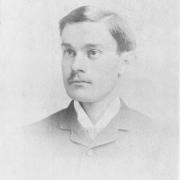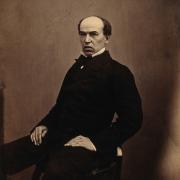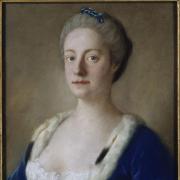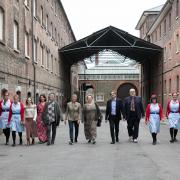Catherine’s subject matter is a very personal response to her surroundings

Catherine Farr moved from Spain some 11 years ago to the Romney Marsh and loves its great light, big skies and proximity to the sea.
A Londoner by birth, she took a BA Honours in Fine Art at Wimbledon, then did a PGCE at Goldsmith’s College so that teaching could help support her growing passion for painting.
Catherine used to draw a lot as a child and then saw an advert for a Painting by Numbers set.
An only child and often lonely, the meticulously organised painting by numbers offered her an escape. “I just loved the smell of the paint,” she recalls.
I ask her if she still paints to a design, or whether her canvases evolve. “I have an image and I may think I love the light, or I love the colour. But it never comes out as planned,” she laughs.

“The disadvantage is if you have a plan. I tend not to think about it, I just go with it.” She describes her subject matter as ‘a personal response to my surroundings, places of escape or respite, safe and peaceful areas.’
Her art training, she adds, helps her to understand her craft. How then does she know when a work is complete? “When I realise I am just fiddling about and not instinctively making marks anymore! I really think when I am plonking bits of colour on, I don’t know what I am doing. But other times the mark-making is purposeful.”
Formal training gives you access to a group of people off whom you can bounce ideas. “How would you get that on your own?” she asks, although admitting that this might create contradictions.
Her training at Wimbledon taught her everything she needed to know, from how to stretch a canvas to making paint. “When I teach, I try to get people to know about their materials.”
Catherine always uses oils. “I do two things, small mixed media with tissue and oil pastel. Oil has an intensity and depth of colour: there is a whole lusciousness to it.”
She uses Sennelier oil pastels, light sticks of oil which melt onto paper or card. “I love oil but sometimes this may be slower: oil pastels and tissue are quicker and capture the energy.”
So does intellectualising lessen the power of a work? Catherine ponders this. “There is nothing wrong with liking a piece of work and not knowing why.
“It doesn’t matter if you don’t know why you like it, but sometimes intellectualising can lessen the power.”
Catherine often paints at the late Christopher Lloyd’s garden at Great Dixter, but she also loves the beach. “I always want to capture a quality of light,” she says.
However, she admits it is difficult to be truly original, and just tries to paint what works for her, her instincts finely honed by her training and practice.
The process involves taking lots of photographs and doing drawings, though she may work directly from her subject, for instance at Great Dixter, where the dahlias can grow very tall.
She may work in series, for instance she has seven of Rye Harbour and seven of the long border at Great Dixter, another seven of long walks on the beach. Mainly she works on wood panels and keeps them quite small at 30 x 60 centimetres.
The mixed media works are even smaller, and it can take her anything from half an hour to several weeks to complete a work. “Sometimes you are pleased with your progress, then you look at the work the next time and you are less satisfied.”
Given the limitation of having to work in one colour only, Catherine would choose violet, because ‘it’s the greatest colour, the most expensive, the richest and the most spiritual. When used against yellow, it positively sings.”
Her artistic heroes include Winifred Nicolson, Fred Cuming, Joan Eardley, Joan Mitchell, Alice Neel, Frida Kahlo and Georgia O’Keeffe.
Her advice to a young artist is simple. “Go for it, be honest, but know your craft.” For herself, she wants to expand into working in other countries and building up more critical awareness.
Find out more
Visit www.catherinefarr.com for further information about future exhibitions and for news about Catherine’s art classes.



























